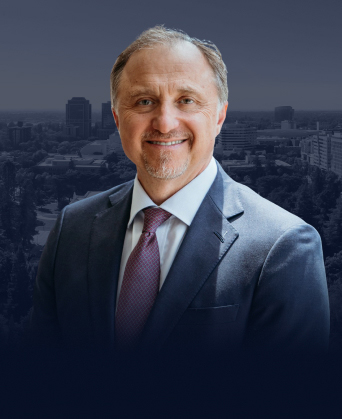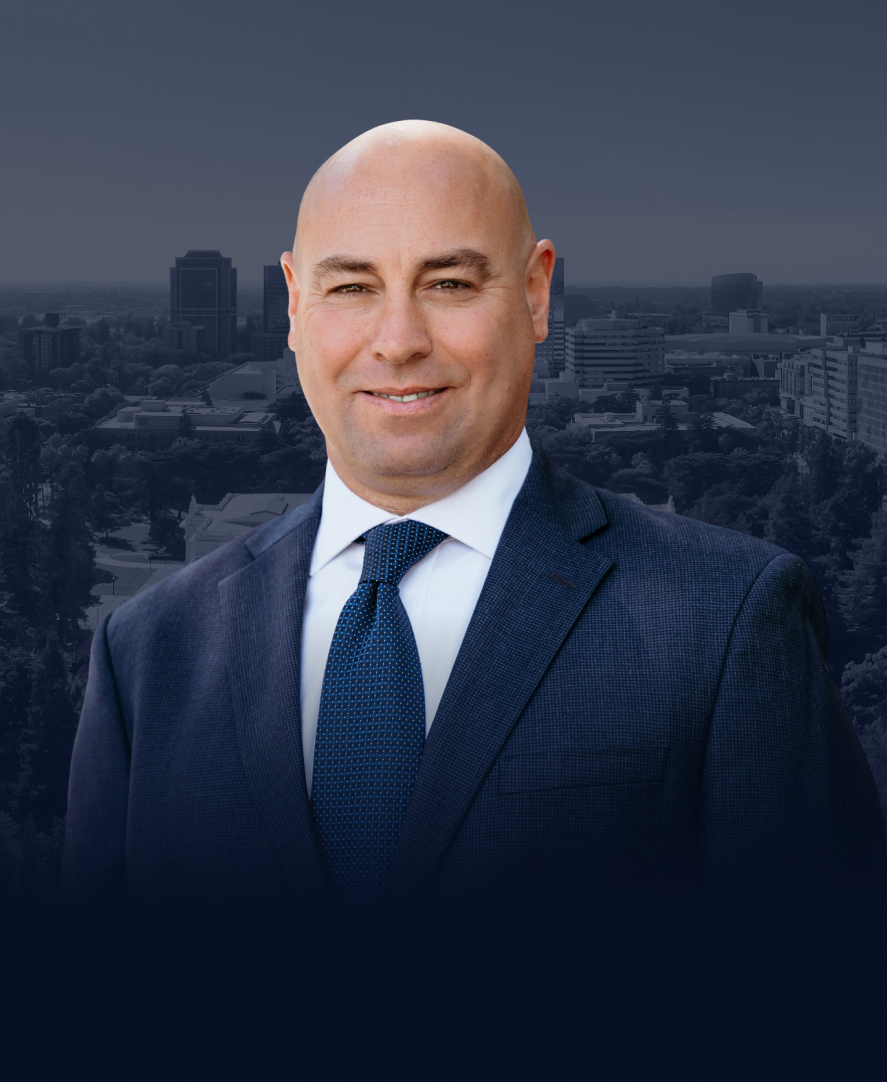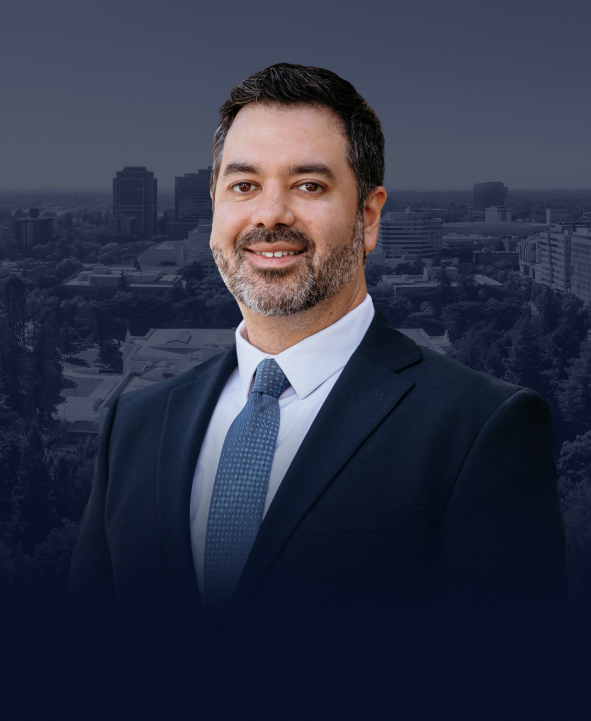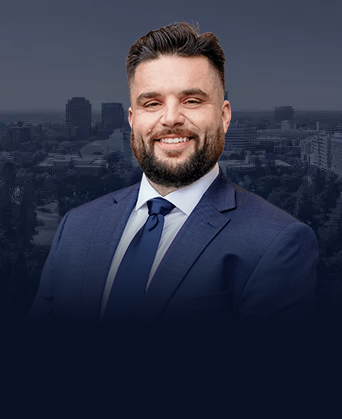There is perhaps no catastrophic injury more frightening than a spinal cord injury. Damage to the spinal cord is often irreparable and may cause paralysis — a partial or total loss of sensation and mobility. Paraplegia (paralysis below the waist) and tetraplegia (paralysis in all four limbs) are both devastating disabilities that can severely change a victim’s life and financial future.
If you have suffered a spinal cord injury in an accident caused by someone else’s negligence or distracted drivers, you should not be forced to bear this financial burden alone. Let the dedicated Sacramento spinal cord injury attorneys at Demas Law Group fight for the compensation you deserve.
Our attorneys have helped thousands of people across Northern California successfully obtain maximum payments for complex personal injury claims. Our law firm has earned a stellar reputation for our:
- Extensive experience and resources. Our attorneys have been successfully handling personal injury claims for more than two decades.
- 99 percent success rate. When we decide to take a case, we are confident in our ability to fiercely represent our clients.
- VIP treatment of clients. We understand what our clients are going through, and we are committed to treating them with the compassion and personalized attention they deserve.
- “No win, no fee” guarantee. We recognize the financial pressure our clients are under, so we never charge for legal services unless we recover compensation for you.
Don’t let a profit-driven insurance company tell you what fair compensation should be for your injury. Let our dedicated Sacramento spinal cord injury attorneys fight for the full compensation you deserve. Schedule a free consultation with our lawyers today.
Our Spinal Cord Injury Lawyers Can Help You
Treatment for spinal cord injuries is extremely expensive, and ongoing care is often required. In addition, victims of spinal cord injuries face other losses that can add up to an unbearable financial burden. Our goal as your personal injury attorneys in Sacramento is to ensure you are not left with debt and unable to care for yourself after a catastrophic injury.
Each case is different. Depending on your case, we may demand payment for:
- All medical costs from the date of injury and into the future
- Lost wages from the date of injury, as well as future income, unrealized because of the injury
- Property damage, such as in a car accident
- Pain and suffering, including disruption of your lifestyle and loss of enjoyment of life
Our experienced Sacramento spinal cord injury attorneys will launch an immediate investigation into your accident to demonstrate who should be held liable. As part of this investigation, we will develop a full accounting of the damages you have suffered. In cases of paralysis and other catastrophic or injuries, we work with life-care planners to calculate detailed projections of future medical needs and their costs long term.
every aspect of filing your personal injury claim. With strong evidence in support of your case, we will file claims with the appropriate insurance companies. We will negotiate aggressively for full and fair settlements, and when insurers refuse to provide appropriate payments, we will pursue justice through personal injury lawsuits.
Schedule a free consultation with our legal team today to learn what types of compensation you may be entitled to and how we can help.
What to Expect from Traumatic Spine Injury
The spinal cord runs from the brain stem down through the spine, a stack of vertebrae rising from the pelvis to the skull. It connects the brain to the body’s central nervous system, enabling the brain to control bodily functions and feel sensations.
When the spine is subjected to extreme force, such as a blow, heavyweight, or penetration, the vertebrae can break and tear or completely sever the spinal cord. This is known as a traumatic spinal cord injury. (Infection or disease can cause a nontraumatic spinal cord injury.)
When the spinal cord is damaged, the brain’s ability to control body parts and systems is disrupted. The loss of sensation and/or mobility from nerve damage to the spinal cord occurs from the point of injury along the spine and below. For example, a cervical (neck) spinal cord injury may cause a loss of function in the shoulders and down throughout the rest of the body. A sacral (pelvic) spinal cord injury may cause a loss in the hips and legs.
Spinal cord injuries are described as “partial” or “complete.” In an incomplete spinal cord injury, there may be some sensation and mobility below the injury, but it may exist on only one side of the body. Full recovery from an incomplete spinal cord injury is possible in some cases. After a complete injury, the individual is paralyzed and, although modern medical care can treat some symptoms, the injury cannot be repaired and is permanent.
A doctor’s diagnosis of a spinal cord injury will refer to the regions of the spine (cervical, thoracic, lumbar, sacral) and the vertebra affected by abbreviation and number, e.g., a C4 or T1 injury. But paralysis is typically described as:
- Paraplegia, affecting all or part of the legs and/or pelvic organs, due to damage in the thoracic, lumbar, or sacral regions of the spinal cord
- Tetraplegia (also known as quadriplegia), affecting the shoulders, trunk, arms, hands, legs, and pelvic organs, due to a cervical spinal cord injury
People who are paralyzed may also experience such symptoms as:
- Bowel and bladder dysfunction, which increases the risk of urinary tract infections (UTIs), kidney infections, and kidney or bladder stones
- Inability to regulate blood pressure and circulation, which increases the risk of blood clots, such as deep vein thrombosis (DVT) or a pulmonary embolus, either of which can be fatal
- Inability to regulate respiration, increasing the risk of pneumonia or other lung problems
- Sexual dysfunction, including loss of fertility
- Depression, due to continuing pain, as well as drastic changes in the life once lived
If you or a loved one has suffered a spinal cord injury, you probably already know you have a long road to recovery ahead of you. You will need all the help and support you can get during this difficult time. If you believe someone else was to blame for your injury, contact our Sacramento spinal cord injury lawyers today to discuss your options.
Spinal Injury Lawyers: Types of Treatment after an Accident
A traumatic spinal cord injury requires emergency care, which will consist of stabilizing and assessing the patient, as well as relieving pain. Surgery to repair the damage may follow.
An individual who has suffered a spinal cord injury in an urban area like Sacramento is likely to be treated in a spine injury center by an interdisciplinary team of spinal cord injury specialists. Patients injured elsewhere may be transferred if their needs are beyond local capabilities.
After recovering from surgery, the patient will begin physical therapy to develop strength, restore any mobility possible, and identify and adapt to limitations. Occupational and vocational therapy may help the patient learn functional skills in order to achieve the highest level of independence possible.
Paraplegic patients who experience lumbar or thoracic spinal cord injuries can regain their independence and mobility with the assistance of rehabilitation programs and mobility-assisting devices such as wheelchairs and modified motor vehicles.
Tetraplegia patients may require assistance with daily living activities and routine self-care, such as eating, dressing, bathing, and getting in or out of bed. They may also need assistive devices for mobility or to communicate or breathe. In the worst cases (C1 to C4 injuries), patients require 24-hour-a-day personal care and are often moved to nursing homes.
Spinal cord injury patients stay in a hospital acute care unit for an average of 11 days and undergo in-hospital rehabilitation for an average of 35 days, according to the National Spinal Cord Injury Statistical Center (NSCISC). Fewer than 1 percent of patients achieve complete neurological recovery by the time they leave the hospital.
The lifetime costs of health care and living expenses for a person with a spinal cord injury range from $1.5 million for a 50-year-old with paraplegia to $4.78 million for a 25-year-old with high cervical (C1 to C4) tetraplegia, the NSCISC reports.
Do not hesitate to seek legal advice if you have suffered a spinal cord injury in an accident that was not your fault. Our knowledgeable spinal cord injury attorneys do not charge fees to begin work on personal injury claims, and we only get paid if and when we recover money for you.
Our Sacramento Spine Injury Lawyers will Fight for You
If you or a loved one has suffered a spinal cord injury with any level of paralysis in an accident someone else caused, let our personal injury law firm help you pursue the insurance compensation you need and deserve.
Our tenacious personal injury attorneys develop solid claims and fight fiercely for every client. We will conduct a thorough accident investigation for you and confer with medical specialists to document the full extent of your injuries and the compensation you are due.
Schedule a free, no-obligation consultation to discuss your spinal cord injury case with an experienced spinal cord injury attorney at Demas Law Group in Sacramento, California, today.
Call (916) 764-3059 or contact us online now.
This literature may be considered attorney advertising or an offer of professional services, according to rule 1-400 Rules of Professional Conduct by the State Bar of California. The information does not constitute a guarantee, warranty, or prediction regarding the outcome of your potential legal matter.
What should I do if I’ve suffered a spinal cord injury?
Demas Law Group, P.C., advises anyone who has sustained an injury in an accident to seek immediate medical treatment. Spinal cord injuries always require hospitalization, and if you decide to file a claim against the responsible party, it is very beneficial to have your injury documented by medical professionals from the very beginning. Medical treatment for spinal cord injuries is extremely complex and the strength of your case depends in part on keeping track of these voluminous medical records. If you believe someone is at fault for your accident, it’s important to document the accident as much as possible. If you are too injured to do this, have a family member or friend assist you. Get the names of anyone who may have caused the accident and any witnesses, included law enforcement officials who may have been present at the scene. Take pictures of your injuries and the accident scene. Write down all the details of the accident as soon as possible and call the experienced spinal cord injury lawyers at Demas Law Group, P.C.
What are the different types of spinal cord injuries?
Spinal cord injuries are classified in two ways: by the severity of the injury to the spinal cord itself and the result of that injury. These categories are listed below: Partial spinal cord injury: In these cases, the spinal cord suffers bruises, contusions, swelling and other trauma, but the spinal cord is not severed. Patients often partially or fully recover from partial spinal cord injuries when proper medical treatment is received. Complete spinal cord injury: in these cases, the spinal cord is cut into and in the most severe cases, completely severed. Complete spinal cord injuries always result in paralysis below the point of the injury. Currently there is no known treatment to repair a severed spinal cord.
Results of spinal cord injuries:
- Incomplete paraplegia: Generally, this results from a partial spinal cord injury to the area below the cervical vertebrae or neck and results in partial leg paralysis or immobility. Sensation and mobility of the area below the injury occurs, but it may exist on only one side of the body. Full recovery is possible in some cases.
- Complete paraplegia: This results from complete spinal cord injuries below the neck area where the spinal cord is cut or completely severed. Paralysis of both legs occurs, and while some symptoms can be alleviated by modern medical treatments, the injury cannot be repaired and is permanent.
- Incomplete tetraplegia/quadriplegia: This results from partial spinal cord injuries in the cervical vertebrae or neck area. Paralysis and/or loss of feeling occur on the arms and legs. Incomplete spinal injuries differ from one person to another because the amount of damage to each person’s nerve fibers is different. While the prognosis for recovery is not as high as incomplete paraplegia, people can and do partially recover from these injuries with proper medical treatment.
- Complete tetraplegia/quadriplegia: The spinal cord is partially or fully severed in the neck area and paralysis occurs on both arms and legs. Because autonomic functions such as breathing and heart rate are also affected, such injuries are often fatal. Currently, there is no treatment to repair a severed spinal cord and the injury is permanent.
What are some of the other health issues associated with spinal cord injuries?
Some of the most serious medical complications resulting from spinal cord injuries involve the function of the autonomic nervous system. They include:
- Bladder and bowel dysfunction
- Bony dysfunction
- Cardiovascular disease
- Deep vein thrombosis (DVT)
- Heterotopic ossification (HO) and cysts
- Hyperthermia
- Neuropathic spinal cord pain
- Osteoporosis and fractures
- Respiratory dysfunction, pneumonia, atelectasis (collapsed lung), aspiration, restrictive lung disease
- Loss of sexual function
- Postural (orthostatic) hypotension
- Spasticity
- Syringomyelia
- Vascular dysfunction
- Shortened lifespan
Who can be held responsible for a spinal cord injury in Sacramento?
Anyone whose negligence causes your injury can be held responsible. Motor vehicle accidents account for nearly half of all spinal cord injuries, and if the other driver was negligent, they are legally responsible for compensating you for your injuries. Falling accidents are the second leading cause of spinal cord injuries, and if the fall was causes by a negligent property owner, the property owner is responsible. In cases of violent crime, the perpetrator may be liable for both criminal and civil damages. The spinal cord injury lawyers at Demas Law Group, P.C., can help determine who is responsible for causing your injury, and recover fair and full compensation for your damages.
I was partially responsible for my accident. Do I still have a case?
California is a comparative damage state, so even if the defendant was partially negligent, you may still have a case. Settlements (or verdicts) in such cases are determined by the percent of fault attributed to the defendant. For example, if you’re found 25% percent at fault and the defendant is found 75% percent at fault and you win your case, your settlement will be approximately 75% percent of what it would have been if you had no fault at all.











